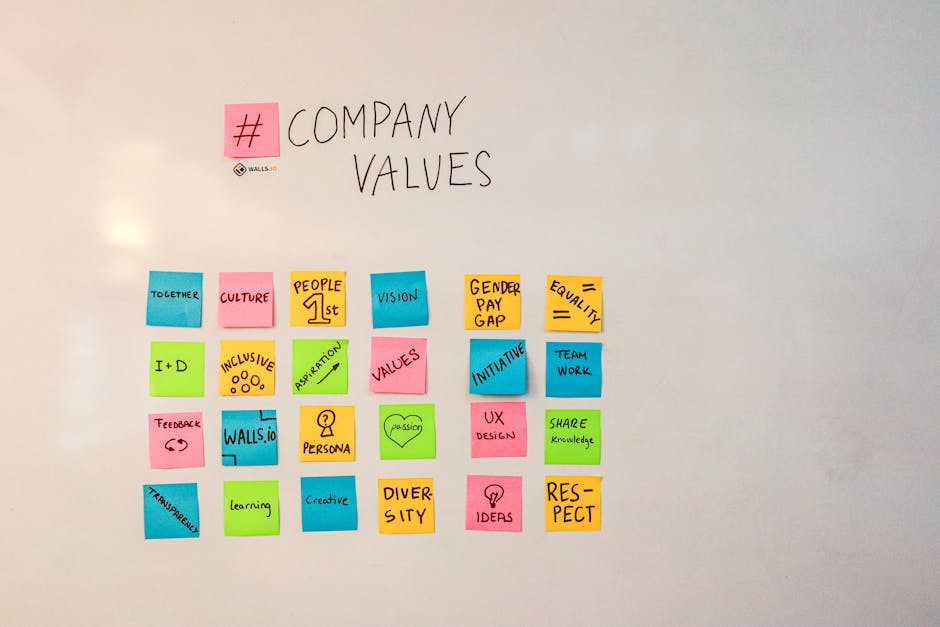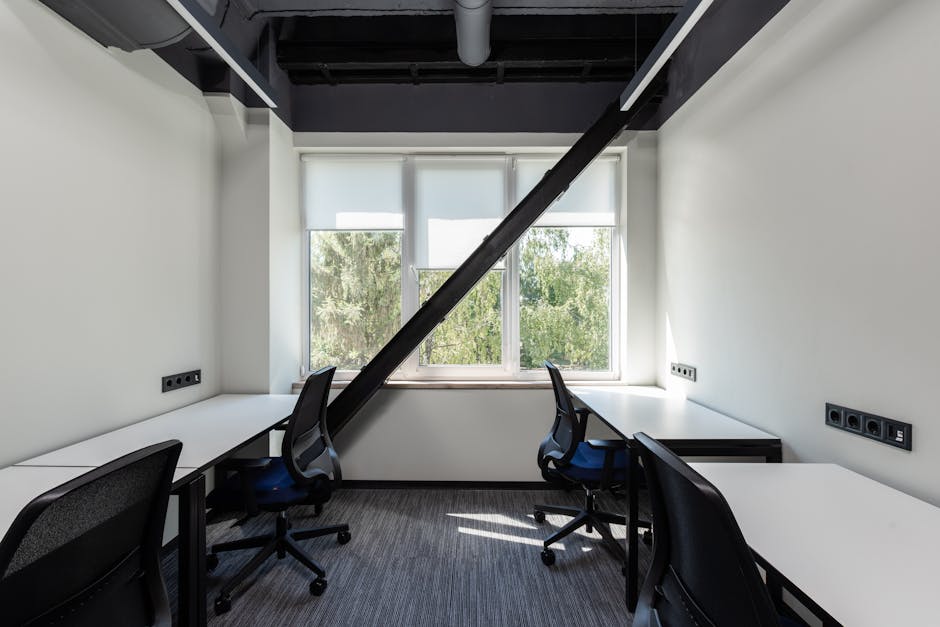Transforming Your Office into a Dynamic Culture Hub: 6 Innovative Strategies
“In today's hybrid work environment, offices need to evolve beyond traditional workspaces into vibrant culture hubs. This article explores six innovative strategies to transform your workplace into a dynamic center for collaboration, community building, and innovation that employees genuinely want to visit. ”

Transforming Your Office into a Dynamic Culture Hub: 6 Innovative Strategies
In the post-pandemic era, the purpose of physical offices has fundamentally shifted. No longer just places to work, today's successful workplaces function as vibrant culture hubs—spaces that embody company values, foster meaningful connections, and inspire innovation. As organizations navigate hybrid work models, reimagining the office environment has become essential for attracting employees back and creating spaces they genuinely want to be in.

Why Culture Hubs Matter in Today's Workplace
Research consistently shows that meaningful in-person interactions create the bonds that drive employee retention and organizational success. According to the Harvard Business Review, frequent face-to-face engagement leads to greater commitment, support, and cooperation among team members. However, simply mandating office attendance isn't enough—the environment itself must inspire, engage, and reflect your company's unique identity.
A well-designed culture hub doesn't just accommodate work; it celebrates it. It transforms the workplace from a mere collection of desks into a dynamic community center that employees are drawn to, even when remote work is an option. Let's explore six innovative strategies to reimagine your office as a thriving culture hub.
1. Embrace and Encourage Workplace Socializing
Traditional management approaches often viewed casual workplace conversations as productivity drains. However, modern workplace strategy recognizes that informal socializing is precisely what builds the connections that make employees reluctant to leave—even when presented with better opportunities elsewhere.
These spontaneous interactions create friendship bonds that significantly enhance workplace satisfaction. More importantly, unstructured conversations frequently spark innovation and creative problem-solving that formal meetings cannot replicate. Rather than discouraging socializing, forward-thinking organizations are designing spaces specifically to facilitate these valuable exchanges.
Consider creating comfortable lounge areas, coffee bars, or game spaces where employees can naturally gather. These informal settings often generate the most valuable insights and strengthen team cohesion in ways that scheduled meetings cannot match.
2. Use Environmental Storytelling to Reinforce Culture
Your physical space should visually communicate your organization's history, achievements, and aspirations. When someone walks into your lobby or through your hallways, what story does the environment tell?

Environmental storytelling transforms blank walls and empty spaces into powerful cultural reinforcement tools. Consider installing timeline displays highlighting company milestones, showcasing employee achievements, or creating visual representations of your mission and values. Digital displays can feature rotating content about ongoing projects, while artistic installations can reflect your brand's aesthetic and ethos.
This approach does more than decorate—it continuously reminds everyone of what your organization stands for and where it's headed. When your walls speak for themselves, they reinforce cultural alignment and create a sense of belonging and shared purpose.
3. Engineer Complex Networks of Interaction
Research indicates that the best predictor of team performance isn't what happens during formal meetings but rather the energy and engagement that occurs outside them. Smart organizations are using data analysis to understand interaction patterns and deliberately engineering environments that promote cross-functional connections.
Simple environmental changes can have profound effects on interaction patterns. Consider:
- Designing centralized break areas that bring different departments together
- Installing longer communal tables in cafeterias to encourage mingling
- Creating visual displays of ongoing work that might spark spontaneous conversations
- Positioning complementary teams in proximity to one another
These thoughtful adjustments to physical space can break down silos and create the diverse interaction networks that drive innovation and organizational cohesion.
4. Rethink Individual Offices for Collaborative Success
As hybrid work becomes standard, the traditional allocation of space deserves reconsideration. Many organizations are reducing individual offices in favor of creating purpose-built environments that support specific work modes and collaborative needs.

Consider replacing some private offices with:
- Flexible "hotelling" spaces that can be reserved as needed
- Purpose-designed rooms for brainstorming and ideation
- Project rooms where teams can maintain ongoing work without disruption
- Quiet zones for focused individual work
- Technology-enhanced spaces for seamless hybrid collaboration
This approach acknowledges that different tasks require different environments and that effective collaboration spaces are as important as individual workstations in today's workplace.
5. Create Neighborhoods and Adaptable Pods
The static office layouts of the past no longer serve today's dynamic work patterns. Forward-thinking organizations are creating "neighborhoods"—clusters of workstations that promote collaboration while maintaining the flexibility to evolve as projects and teams change.
These neighborhoods can be defined using movable partitions, modular furniture, or visual design elements that create a sense of identity without permanent barriers. This approach allows teams to customize their immediate environment while maintaining connection to the broader organization.
The key is adaptability—creating spaces that can be reconfigured as easily as projects and priorities shift. When employees can shape their environment to suit their current needs, they gain a sense of ownership that enhances engagement and satisfaction.
6. Incorporate Performance "Nudges" Throughout the Environment
Your physical environment can subtly reinforce goals, values, and progress through strategic visual cues. These "nudges" serve as constant reminders of what matters without requiring formal communication.
Consider implementing:
- Interactive displays showing real-time progress toward key objectives
- Visual representations of company values in high-traffic areas
- Recognition walls celebrating employee achievements
- Artifacts that represent company milestones or customer impact
- Digital dashboards highlighting current priorities and successes
These environmental elements create a continuous connection to purpose and progress. When goals and values are visibly present throughout the workspace, they become integrated into daily consciousness rather than abstract concepts discussed only in meetings.
Beyond Workplace: Building a Community That Draws People In
The ultimate goal isn't just getting employees back to the office—it's creating an environment they actively want to experience. A true culture hub offers something that remote work cannot: authentic human connection within a physical space that embodies shared purpose and identity.

By thoughtfully designing your environment to promote interaction, tell your story, and support diverse work modes, you transform your office from a workplace requirement into a community destination. This shift is particularly crucial for organizations managing a distributed workforce, where the office must offer clear value beyond what employees experience at home.
Conclusion: The Culture Hub Advantage
As organizations navigate the complexities of hybrid work, the physical office has an opportunity to evolve into something more meaningful than ever before. By reimagining your workspace as a culture hub, you create an environment that doesn't just accommodate work—it celebrates your unique organizational identity and fosters the human connections that drive success.
The most effective culture hubs combine thoughtful design, strategic space planning, and a deep understanding of how environment shapes behavior. When these elements align, the result is a workplace that doesn't need mandates to draw people in—it creates its own gravitational pull through the experiences and connections it enables.
In today's competitive talent landscape, organizations that successfully transform their offices into vibrant culture hubs gain a significant advantage in attraction, retention, and innovation. The investment in thoughtful workplace design pays dividends in the cultural cohesion and collaborative energy that drives organizational success.